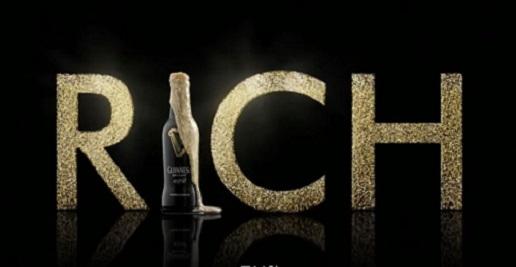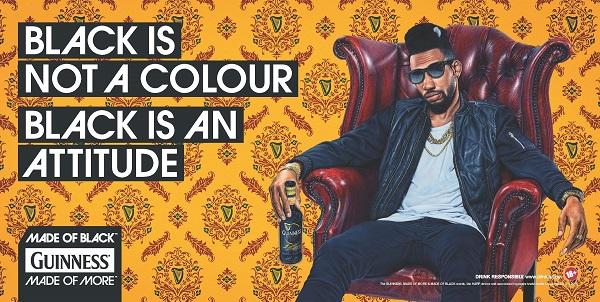

Despite considerable heritage and success, sometimes brands quite simply need a brand lifter: a rejuvenation that allows the brand to profit from new opportunities, such as a new demographic grouping or emerging trends within a culture. At Labbrand, our Brand Lifter product utilizes a variety of bespoke methodologies to help brands already present in the market make strategic readjustments that leverage existing equities and emerging consumer needs to take the brand to the next level.
At Labbrand, we have the pleasure of helping brands with this type of recalibration in China. Our Brand Lifter product utilizes a variety of bespoke methodologies to help brands already present in the market make strategic readjustments that leverage existing equities and emerging consumer needs to take the brand to the next level.
From this perspective, we have noticed the innovative strategy of Guinness in non-traditional markets. This project’s innovation, cultural intelligence, and creativity represent the essence of ambition within the Brand Lifter product.

Guinness enjoys an almost ‘celebrity status’ back in Ireland and other traditional beer drinking markets, due to consistent communication, genuine authenticity, and a unique taste and texture. This has allowed Guinness to adopt the role of a unique character within the beer category, elevating the brand to a mythical status that has been passed down from father to son, and allowing it to claim the reputation of perhaps the most respectable beer in the industry.
In developing and non-traditional markets, however, this reputation does not hold. The pace of generational change means that certain habits and brand preferences get stuck in one generation. For comparison, in Ireland, a son yearns for the day his father invites him to share their first Guinness, no matter if he was born in 1996 or 1896. But in younger markets, where the concept of drinking a foreign beer is only a few decades old, Guinness became the beer of the first adopters – or from the perspective of young people in these markets, ‘an old man’s drink’. At a perceptual level this created a barrier for new drinkers, and the unique darkness and foam was not seen as iconic, but as something antiquated and outdated.
SOUTH AFRICA
To address this challenge, Guinness made a bold decision: recommunicate the brand and product to a younger generation of African consumers who are engaged in the cultural rejuvenation that is occurring in cities like Johannesburg in South Africa, and Lagos in Nigeria.
The idea was based on reimagining the core differentiated aspect of the Guinness – the darker black color. Sensitive to cultural fault lines, the brand asked consumers to think of black as a broader idea, philosophy and attitude, with a campaign entitled “Made of Black”.
As part of the wider campaign, Guinness engaged with young people at the cusp of cultural change in Africa, pulling from fields such as art, film, music and fashion. Through interviews and profiles they suggested black as a force of creative freedom, beauty, inspiration, focus, vision and wisdom.
By presenting black in a new light, Guinness has created a strong connection with the dreams and aspirations of young Africans, creating a stronger level of local relevance for the brand. The company is staying connected to where their markets are heading.
SOUTH KOREA
This month, Guinness used a similar strategy in South Korea, a non-traditional market for the beer brand. The key was to encourage greater trial and engagement with a beer seen as having an imposingly dark and think brew. Within the context of a culturally dynamic market, Guinness boldly asked the question “what is the taste of black?”. Through the means of leading edge cultural icons such as artists, bloggers, and dancers, the beer brand suggests black is the backdrop for which to explore and to be bold. This message connects the brand with the spirit of cultural renaissance occurring in South Korea – far beyond Gangnam Style and K-Pop.
Labbrand’s personalized Brand Lifter product is focused on delivering this type of transformation for our clients wanting to recalibrate their brand for greater success. As with Guinness, it is about understanding the potential of your brand through culturally relevant insight, knowledge of social currency, and an understanding of industry trends. In the beer icon’s case, it was something already existing in the brand’s equity which was powerfully reimagined in the context of a new audience.
CHINA
In China, we find that new consumer groups form rapidly as generational cohesion is stretched by rapid development and quick technological adoption. This is not necessarily specific to younger demographics – China’s one-child policy, for example, has created unique kinds of mothers and fathers, and technology has created an elderly population more tech-savvy than old folks elsewhere.
This brings to mind questions about future Chinese perceptions. While the beer industry has historically been dominated by domestic brands, for example, a “premification” is happening across all geographic locations. Four in ten consumers want to try a more premium brand as disposable incomes rise nationwide. For Guinness, it is significant to note that 49% rate “international” as an important attribute of a premium brand.
The key emphasis is not a fundamental overhaul of your brand, but a strategic and insightful brand lifter adjustment of your brand in order to unveil new potential revenue drivers. It is about maintaining your essence but deploying it in a way that creates maximum cultural traction here in China. Cultural trends and changes should not be a threat. At Labbrand, they are the pathway to opportunity.
A Labbrand Group Company © 2005-2025 Labbrand All rights reserved
沪ICP备17001253号-3To improve your experience, we use cookies to provide social media features, offer you content that targets your particular interests, and analyse the performance of our advertising campaigns. By clicking on “Accept” you consent to all cookies. You also have the option to click “Reject” to limit the use of certain types of cookies. Please be aware that rejecting cookies may affect your website browsing experience and limit the use of some personalised features.